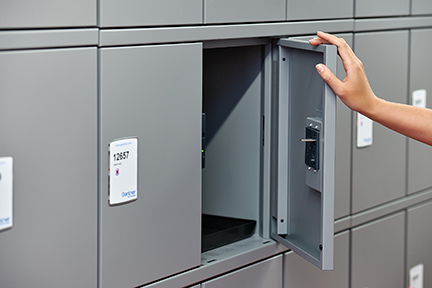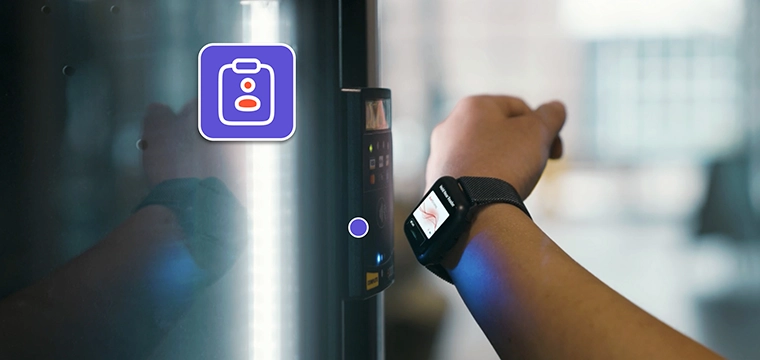
Higher education ramping up as new hot spot for smart storage
It’s not unusual for tech-driven companies like Amazon to add 50,000 employees seemingly overnight. But finding the office space to accommodate that many new hires is a much more difficult task.
That’s where contactless lockers on corporate campuses enter the picture, offering much needed storage when space and time are limited.
Higher education has been a significant new market for smart lockers – and despite being relatively untapped in North America, the concept is already strong in other parts of the world.
In both the U.S. and beyond, other markets such as corporate workplaces, health clubs and ski resorts are benefiting from smart locker technology in a major way.
Corporate workplaces in particular make up an attractive segment for contactless locker technology, says Gerhard Pichler, business development manager for Gantner Technologies, which provides a range of networked smart locker systems.
In both the U.S. and beyond, corporate workplaces, health clubs and ski resorts are benefiting from smart locker technology in a major way
Gantner has deployed networked locker systems for KPMG, BNP Paribas and other Fortune 100 companies to help them increase their capacity for additional employees in their corporate offices.
Exponential work force growth has created challenges for companies in rapidly expanding verticals like the tech industry. Pichler points out that if Amazon or similar tech company wanted to add thousands of employees to serve an immediate need, they would have one of two options to support them: Find an office big enough to fit the mass of new employees, or use existing resources.
The first option is not always feasible. An office of that size would need to be built, and a construction project of that scope would take years and require sizeable capital investment.
The second option would be for the company to use its existing office space and shift to a flexible work environment. Instead of having dedicated desks, the office could provide meeting rooms, lounges and other shared workspaces where employees could choose to work. A system of smart lockers could make that scenario possible.
“More and more companies are moving away from fixed, assigned desks to a more flexible working environment, which creates the need to provide secure private storage for employees to store work documents and personal equipment,” Pichler says. “Managing the ever-increasing number of employee lockers in an efficient way across multiple buildings and departments is the new challenge.”
Corporations both in the U.S. and abroad have been using contactless locker technology to help create that kind of flexible working environment. An example of this is Erste Bank in Vienna, Austria.

Gantner has deployed networked locker systems for KPMG, BNP Paribas and others to help increase capacity for employees in corporate offices
Erste Group is one of the largest financial services providers in Central and Eastern Europe, serving 16 million clients. For its new headquarters in Vienna, the bank needed to create a flexible office space for 4,500 employees, none of whom had an assigned desk. Instead, employees are free to choose from available workspaces ranging from freestanding desks to quiet work areas, telephone cabins or meeting rooms.
“Our goal was to create a working environment in which our employees can easily collaborate, regardless of organizational structure and develop ideas together,” says Andreas Treichl, CEO of Erste Group.
Given that employees work with sensitive financial information, the company required that every staff member have a place to lock away important documents every day.
Using Gantner’s contactless locker technology, the flexible office now is home to 7,000 networked lockers throughout its five building complexes. Employee ID cards function as locker keys, and employees can choose any available locker but cannot occupy multiple lockers at the same time. The lockers have alarms and the management system generates usage reports for system administrators.
In addition to the employee lockers, there are also personalized mailboxes in Erste Group’s mailroom that are secured by networked locks, as well as options for bicycle storage.
Pichler says the increasing demand for flexible workspaces continues to drive the demand for contactless locker technology. “Right now, this is a huge office trend, and there is a lot of investment in locking systems in the corporate market for that specific reason,” he says.




